There’s been a lot to love in 2015. Here, in no particular order, are ten of my favourite books from this year.
The Other Side of the World – Stephanie Bishop
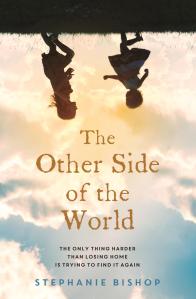
Stephanie Bishop’s second novel, The Other Side of the World, is a masterful study in landscape, and in the essential connection between place and identity. It’s also a convincing portrait of new family life: the shaky steps between partnership and parenthood, the reshuffle of romance and responsibility. Set in the 1960s in England, Australia and India, Bishop has superior command of the indescribable: the way our surroundings influence our emotions, the way we move through the world. Reading The Other Side of the World is a profound experience because Bishop’s writing simply distils the pain of the day-by-day. I was gripped by the deftly drawn Henry, and by Charlotte, who feels at once indistinct – as though she might dissolve on the page at any moment – and indelible. My heart ached for them both. Tramping the soggy fields in Cambridge with Charlotte, the cold and the nostalgia and the desperation pierce your insides; you can feel the sticky heat and the history and understanding weighting Henry’s visit to India (in one of the novel’s most astounding segments).
This year Bishop was caught up in the Battle of the Middlebrow – the saga of Australian literary pomposity. Along with Antonia Hayes and Susan Johnson (two writers with new works as complex and delectable as Bishop’s Other Side), Bishop was dumped into Beth Driscoll’s possibly well-meaning evisceration of Australian women’s writing – dubbed ‘the middlebrow’ – in the Sydney Review of Books. These works, apparently middling because they are written by, about, and for women, were roundly dismissed (perhaps unwittingly, though I doubt it) by Driscoll with some slippery rationalisations, prompting the three accused writers to respond with searing analyses of the Australian literary scene and women’s place in it. To quote Bishop: ‘In terms of how it is used in this piece, middlebrow becomes a biased and unhelpful catchall category that withholds from middle class female readers the possibility of reading as intellectuals, and prevents any middle class woman whose writing might engage with middlebrow practices from entering the sphere of the literary.’ As the men of this country (and indeed the wider literary world) scrabble to retain their chokehold on the classifiers ‘highbrow’ and ‘literary’, it’s immensely enjoyable to watch writers like Bishop, Hayes and Johnson (as well as others, the divine Maxine Beneba Clarke, Joan London, Hannah Kent and Emily Bitto, to name a few) swoop in to claim their place at the top of the ladder. I recommend the SBR letter as a companion piece to the visceral, satisfying experience of reading The Other Side of the World.
The Natural Way of Things – Charlotte Wood
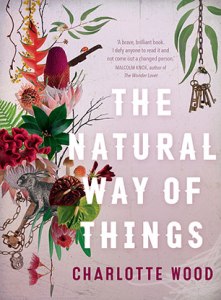
Charlotte Wood was angry when she conceived and wrote The Natural Way of Things, a scorching dystopian vision of a future for women that could really be the now – and you will be angry, too, when you read it. For all the right reasons. A group of women are ripped from their lives and interned in a prison camp of sorts, run by two insidious guards and serviced by a ‘nurse’. The women are forced to wear Puritan-style clothes and to work as slaves on seemingly thankless tasks, like moving gargantuan cinder blocks from one pile to another down a dusty road. They are routinely tortured, both physically and emotionally, by the camp’s leaders and, sometimes, by each other. They don’t know how or why they are there, and their only clue is the one connection between them all – their involvement in a series of ‘sex scandals’ recently covered by the papers. Wood is a sharp, poetic writer, and her distilled exploration of the mundane injustices these women endure – eating from bowls crusted with days’ worth of filth, sweating into one foul, uncomfortable uniform they are forced to wear every day without relief – is what caught me the most as I read. Momentum builds quickly and the satisfying fire-and-brimstones conclusion explodes on the page. Wood rightly wants shock, anger, as a response; it is a true call to arms.
Between You and Me: Confessions of a Comma Queen – Mary Norris
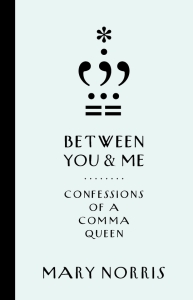
You don’t have to be a grammar stickler to enjoy Mary Norris’s wry, adroit memoir-cum-grammar guide, Between You and Me: Confessions of a Comma Queen. Blending instruction on (American, New Yorker-style) grammar with the story of how Norris came to be the Copy Editor for the New Yorker, Norris’s memoir is slyly informative and full of self-reflexive humour about her place in the literary world. You won’t convince me that learning grammar in the 21st century is meaningless (knowledge of grammar and consistency, and how it changes, remains an essential modern skill); Norris’s memoir has that, plus the added benefit of a story about a clever and influential woman’s rise to prominence. Frank, funny and full of life, Between You and Me is the most fun you’ll have with grammar – promise!
The Illuminae Files – Amie Kaufman and Jay Kristoff
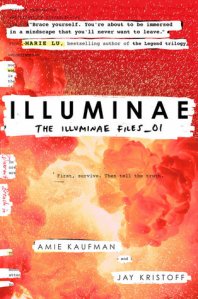
Amie Kaufman is queen of the space opera, and she has paired up with Jay Kristoff to bring us The Illuminae Files, a gripping, highly inventive sci-fi thriller. Told via a dossier of transcripts, emails, IMs and video surveillance reports, Illuminae follows Kady, a teen techno-genius who must save a fleet of warships from impending destruction after her home, an illegal mining settlement on a far-off planet, is attacked by an evil corporation. Those familiar with Kaufman’s Starbound trilogy, which she writes with US author Megan Spooner, will note various similarities: shadowy, nefarious authority figures; a wariness of advancing technology – the next great unknown potential threat; a specific and credible view of a future in space; and a gooey romance. In spite of the similarities between the two, it’s the form of Illuminae that sets it apart from its traditional sibling. The dossier style of writing is a strong, engaging mode of storytelling that will no doubt draw in tons of reluctant teen (and adult!) readers. A thoroughly original and unexpected read, Illuminae was just optioned by Brad Pitt’s Plan B production company, so expect a film instalment in the coming years.
Cloudwish – Fiona Wood
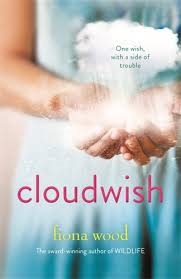
After the resounding success of her second book, Wildlife, Fiona Wood, one of our most valuable writers, is back with another story for her interrelated teen chronicles. Cloudwish, which centres on Vân Uoc Phan, a scholarship student at a prestigious fictional Melbourne private school, is without a doubt Wood’s most accomplished book to date. Vân Uoc, a quiet, determined Vietnamese-Australian girl who is used to going unnoticed, is surprised and amusingly suspicious when school heartthrob Billy Gardiner appears to become instantly enamoured of Vân Uoc right after she makes a half-serious wish that Billy would prefer her to all the other girls in her class.
Vân Uoc’s compelling experience is expertly rendered; as with all of Wood’s books, the pages of Cloudwish are populated with real teenagers having real conversations and feeling and doing real things. As such, the nostalgia factor for a post-teen reader is pretty epic. The work is authentic and refreshingly diverse, and the romance between Vân Uoc and Billy is the heart-fluttering kind that means you, like me, will be grinning and giggling at the pages of your book like a gooey idiot while fellow train passengers give you looks of disdain. And Vân Uoc is a thoroughly authentic hero – one who doesn’t fit into any mould (like the Strong Female Character TM that we’ve all been brainwashed to look for as some stamp of feminist approval) and doesn’t need to. There’s echoes of Jane Eyre – the book was a major influence on Wood and Jane Eyre is Vân Uoc’s hero – but it’s an interrogative and deftly used analogy that doesn’t feel too derivative.
The world of Australian young adult fiction – indeed all young adult fiction, and all fiction, for that matter – can be oppressively narrow, populated by white upper-middle class protagonists (and authors). How refreshing it is to see a non-white hero in a YA novel; Vân Uoc joins the ranks of diverse YA heroes like Alice Pung’s Laurinda, Claire Atkins’ Nona and Jane Harrison’s Kirrali Lewis.
Six Bedrooms – Tegan Bennett Daylight
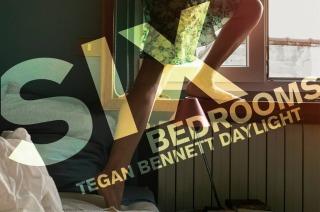
Tegan Bennett Daylight is a startlingly good writer, and her recent collection of short stories, focused on young adulthood but written for adults, is a masterwork. Her painterly descriptions, striking heroes and achingly familiar stories are, at once, painful and exquisite to read. Piquant short stories by women had a ‘moment’ this year, and in my opinion, Six Bedrooms is the best collection of the lot (certainly one of the better short-story collections I have ever been lost in). This is an essential read for anyone, but especially for Australian women of all ages who crave a bit of razor-edged reflection on their youth, and on what, ultimately, has made them them. Read more of my thoughts on Six Bedrooms here.
Carry On – Rainbow Rowell
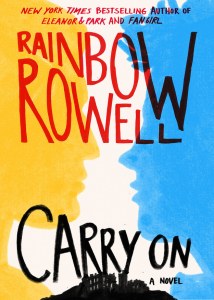
Carry On might feel like a hard-sell for readers new to Rainbow Rowell’s books (and for those who haven’t read the brilliant Fangirl, Rowell’s previous book, which spawned Carry On); it’s essentially expert Harry Potter fan fiction written by an American. But the intractably fun Carry On doesn’t just feel like a ghostly copy of Rowling’s opus. It has a brassy sensibility all its own – and the advantage of being written by Rowell, whose work always feels in tune with the lives and loves of its teenage readers.
In Carry On, Simon Snow is a teenage wizard and the likely subject of a Chosen One prophecy; his roommate, nemesis and obsession object, Baz, is a probable vampire toff who may or may not be trying to kill Simon. Simon, Baz and their classmates are in the final year of school at Watford School of Magicks, run by the mysterious Magi, and hanging over them is the spectre of the Insidious Humdrum, an evil magic something that appears to be after Simon and the whole wizarding world. Despite all this, Simon’s primary focus is on Baz – where he is, what he is planning, why he hasn’t tried to murder Simon in his sleep yet – and this is where Carry On departs from Harry Potter in a most satisfying and refreshing manner. The burgeoning romance (built on the greatest foundation for all fictional romances: the love/hate dichotomy) between Simon and Baz is rendered by Rowell with immense sensitivity, respect and humour. It’s positively swoon-worthy.
With tongue firmly in cheek, Rowell inverts some of the stiffness that bogs down Rowling’s work – Simon is a terrible Chosen One, and he and his friends carry mobiles, use Google, swear and talk about sex in a way that feels very authentic to the teenage experience. If nothing else, Rowell’s entry of a central same-sex relationship into the pantheon of teen fantasy and sci-fi romances makes Carry On a significant addition to the deluge of derivative Chosen One narratives. Carry On is also my favourite reading experience of this year, and so well worth a squiz.
A Guide to Berlin – Gail Jones
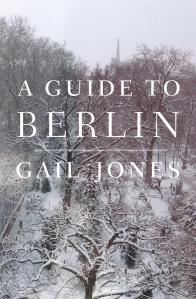
A Guide to Berlin is Gail Jones’s sixth novel, and another blistering landscape portrait by an exquisite Australian author to match Stephanie Bishop’s Other Side. Named for a Vladimir Nabakov story, A Guide to Berlin centres on Cass, a twentysomething art school drop-out from Australia, and the hodgepodge group of international Nabakov obsessives of which she is a member. The group meets in empty apartments and coffee shops around frigid Berlin to discuss the famous writer’s work and engage in ‘sense memory’ storytelling, revealing secrets, memories and histories from their own lives. These exercises gradually coax allegiances within the group, which includes a garrulous American named Victor, Japanese lovers Yukio and Mitsuko, and two Italian men. Cass, a young woman with a predilection for isolation who, when we first meet her, is wandering with blissful aimlessness around Berlin, warms particularly to the group’s two Italian members: the sweet, sexy Marco and the more enigmatic Gino. As their connection solidifies, unbalancing the familial sense of the group, the book creeps towards its inevitably violent conclusion (those who have read one or two of Nabakov’s works will be unsurprised by the novel’s turns, though it makes them no less engaging to stumble over).
Nabakov has his phantom fingerprints all over Jones’s novel, but the brilliance of it – the clean, accessible, bracing prose; the intimate deep-dive into character as we track Cass around Berlin; the image of Berlin itself: icy, grey and swathed in the ghostly monsters of history – is all Jones and her considerable talent. I sat reading it over one divine spring weekend, but I shivered and my feet ached as though I had tramped through the snow-sodden Berlin streets right alongside Cass. A Guide to Berlin is proof of Jones’s superlative ability to transport.
Single, Carefree, Mellow – Katherine Heiny
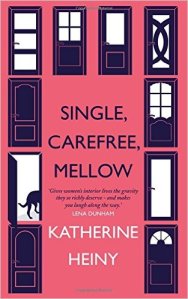
The immensely enjoyable Single, Carefree, Mellow is a short-story collection that defies its own categorisations. A series of stories about love and fidelity, centred on complex women (none of whom, as it happens, are really single, carefree or mellow), US writer Katherine Heiny writes with a sharpness of wit that would make the great Nora Ephron proud. My favourites include ‘Blue Heron Bridge’, in which a woman hosts a doddering priest as a houseguest while intermittently escaping the house to cheat on her husband; the diverting ‘How To Give The Wrong Impression’, which rang true enough for me to illicit a few uncomfortable squirms amid my laughter; and the suite of stories, including the titular ‘Single, Carefree, Mellow’, centred on flighty Maya and her Good Dull Boyfriend Rhodes. Heiny writes about women with depth and grit and, refreshingly, without judgement. How the women of Single, Carefree Mellow live and love is not up for debate; it just is. A delightful read from start to end, Heiny’s stories are rom-coms with a literary flavour. You can read more of my thoughts on Single, Carefree, Mellow here.
Between the World and Me – Ta-Nehisi Coates
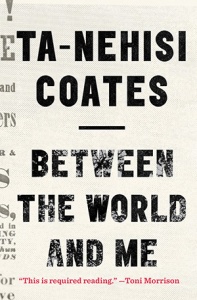
Ta-Nehisi Coates’s Between the World and Me is an essential read of 2015. Like Roxane Gay’s Bad Feminist (the essential read of 2014), there is absolutely no one who won’t benefit from reading Coates’s stunning essay collection, presented, in the style of James Baldwin before him, as a series of letters to his teenage son. Coates, who is a journalist for The Atlantic, is an exquisite writer, and with words so lyrically, painfully beautiful he pulls apart the condition of race, ‘the child of racism, not the father’, and how it impacts the black body. ‘Racism is a visceral experience,’ writes Coates, it ‘dislodges brains, blocks airways, rips muscle, extracts organs, cracks bones, breaks teeth.’ And the work itself is visceral, marked by Afro-pessimism borne of an experience of a ‘moral arc bent toward chaos then concluded in a box’ – a dark subversion of the famous Dr King quote favoured by Afro-futurist Barack Obama: ‘The arc of the moral universe is long, but it bends toward justice’.
Coates’s book has been controversial; in it he appears to offer precious few answers to the many questions he poses, or rather contradicting answers in a kind of internal debate, or, from many critics’ perspectives, the wrong answers. There is a level of pretension in the manner that Coates lingers over his own powerful voice, but the beauty of Between the World and Me is that it speaks to Coates’s specific experience – it is not, and it probably doesn’t have to be, the definitive polemic on contemporary racism (no matter how Coates might have aimed for this, in his desire to write like Baldwin). Simply put, Between the World and Me is a powerful book worth reading and considering; Coates’s provocative assertions were made to chew on.
Honourable Mentions:
Starbound #3: Their Fractured Light – Amie Kaufman and Megan Spooner
The final instalment of Kaufman and Spooner’s fantastic space opera trilogy, Their Fractured Light is a satisfying conclusion to what has been a gem of a series to rip through. The best Starbound instalment is still the first – Lilac and Tarver’s breathtaking survival saga – but this final chapter is still thrilling, romantic and extraordinarily thoughtful.
Killing Monica – Candace Bushnell
A neo-Bergdorf Blondes with a twist, Bushnell’s fiercely funny feminist firebomb is chick-lit with an edge. There’s a kick of metacommentary in the story of PJ, a writer whose famous creation, Monica, causes her so much grief that she decides to kill her off (those of us who remember well how terrible Sex and the City 2 was will draw some amusing comparisons here). A refreshingly inventive novel, Killing Monica is a reminder that Bushnell is a take-no-prisoners badass blessed with acerbic wit and an impeccable sense of literary style.
Prick with a Fork – Larissa Dubecki
Wickedly funny, Larissa Dubecki’s account of her life as the ‘world’s worst waitress’ is a must-read for anyone who has ever had the dubious honour of working in the hospitality industry. Funny, foul and fatuous in turns, Dubecki’s book is guilty fun – rather like bitching with co-workers about a boss who is especially heinous.
You can read my list of favourite TV shows here. And look out for my favourite films, and other odds and ends, coming soon.



